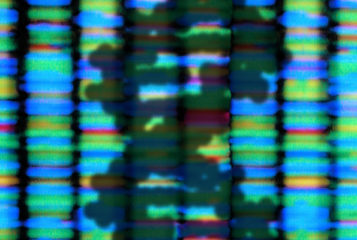The winners of the Nobel Prize in Physiology or Medicine 2011 were announced on 3 October with an unusual twist — for the first time the accolade has been bestowed on someone posthumously. This is normally against the Nobel Assembly's rules, but Professor Ralph Steinman's untimely death on 30 September occurred after messages had been sent to him informing him of his success. The decision was therefore made to uphold Professor Steinman's award, although sadly he had not received the news before he passed away.
Professor Steinman was awarded half the prize and the other half was awarded jointly to Professor Bruce Beutler and Professor Jules Hoffmann, in recognition of the three men's contribution to our understanding of the immune system. Professor Beutler and Professor Hoffmann's research uncovered a family of genes called Toll-like receptors, which are critical for detecting the presence of bacteria or viruses and triggering an immune reaction. Professor Steinman identified a highly specialised type of immune cell, called dendritic cells, which have formed the basis of experimental cancer therapies.
Remarkably, in the last years of his life, Professor Steinman became a 'human guinea pig' as he collaborated with colleagues at Rockefeller University, New York, to test these therapies, known as dendritic cell-based therapeutic vaccines. One such vaccine is licensed for use in the US against late-stage prostate cancer, and others are in clinical trials for a variety of other cancers.
Dendritic cells act as the 'sentinels' of the immune system, patrolling the body for signs of infections or tumour development. On encountering these things they pass a message to T cells and B cells, which act as the 'soldiers' of the immune system and destroy the infected or cancerous cells.
In 2007, Professor Steinman was diagnosed with incurable metastatic pancreatic cancer. In addition to accepting all available therapies, he asked his clinical lab director at Rockefeller, Dr Sarah Schlesinger, and Dr Michel Nussenzweig, the head of molecular immunology, to trial a therapeutic vaccine on him.
After obtaining permission from the US's Food and Drug Administration, Dr Nussenzweig removed some cells from his tumour and extracted RNA from these cells. The team then grew dendritic cells from blood and bone marrow samples taken from Professor Steinman and treated these cells with the RNA isolated from his tumour.
Professor Steinman's dendritic cells were then transplanted back into his body, where they used the tumour RNA as the 'message' to activate T cells to mount an immune response against his tumour. Although there is no way of knowing whether it was this or the conventional therapies that prolonged his life, Professor Steinman survived for four and a half years with a condition that usually results in death within a year of diagnosis.
Speaking to Reuters, Dr Schlesinger paid tribute to a man who 'felt that human clinical investigation was the highest form of research; that it was critical to engage in it'.





Leave a Reply
You must be logged in to post a comment.